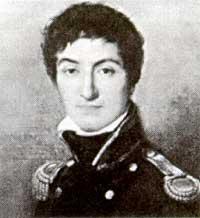Carnot, Sadi
(1796-1832)
This French physicist joined the famous family on June 1, 1796. His father, Lazare, stood out in the Government of the First Republic and with Napoleon La.

Nicolas Léonard Cannot was graduated in 1814 at the Paris Polytechnic School and Army Engineer. That same year he dedicated himself to defending Paris, defending his father Antwerp. However, when Napoleon fell, his father had to go into exile and Carnot left the army for not being able to ascend there. He began to study the distillation of gases and the characteristics of aromas.
In 1824 he wrote a book on the motor force of fire. Despite his good scientific level, until 1834 the scientists discarded him. In it he defines the work as the height in which the weight has been raised by the weight.
Watt had invented the steam making, but was concerned about the work that could be obtained from the thermal making Cannot. In Carnot's time, the steam engine had a yield of 5-7 percent, that is, only 5% of the heat energy of the fuel was used to work and the remaining 95% was lost as heat.
Carnot wanted to know to what extent the performance was improved and demonstrate that the optimal performance of the engine depended on the temperature difference. The temperature of the perfume in the steam engine (T1) was the highest and the cold water (T2) the lowest. Most of the heat energy that could be transformed into work, being the perfect machine, could be expressed as follows:
T1-T2/T2
In this equation, temperatures T1 and T2 are absolute and Kelvin made clear the concept of absolute temperatures a quarter of a century later.
The conversion of heat into work and the conversion of heat work was the subject of a quantitative study for the first time by Cannot. It can be said, therefore, that it is the generator of thermodynamics. His opinion on the propagation of heat was not correct, as it was based on Lavoisier's heat theory, but the results were correct.
The Carno equation shows that the important thing to get the maximum amount of work is the maximum and minimum temperature, and that the intermediate temperatures are independent. In other words, the slow or rapid change of intermediate temperatures had nothing to do with. The dependence of the two extreme points and the independence of the intermediate points is known in thermodynamics.
About ten years later G. H. H. Hess showed that this is true for the heat and reactions he has at his side.
Carnot would allow to deduce the second law of thermodynamics. The same Cannot could be proud of this law, but the plague of cholera died at the age of thirty-six in Paris (August 24, 1832). Carnot's works were followed in Britain by Lord Kelvin and Rudolf Clausius in Germany. The latter is the second law of thermodynamics.
On the other hand, the name of Carnot is often mentioned in a certain cycle of thermodynamics. The Carnot cycle is famous. This reversible thermodynamic cycle consists of two isothermal transformations and two other adiabatic transformations.
Buletina
Bidali zure helbide elektronikoa eta jaso asteroko buletina zure sarrera-ontzian











